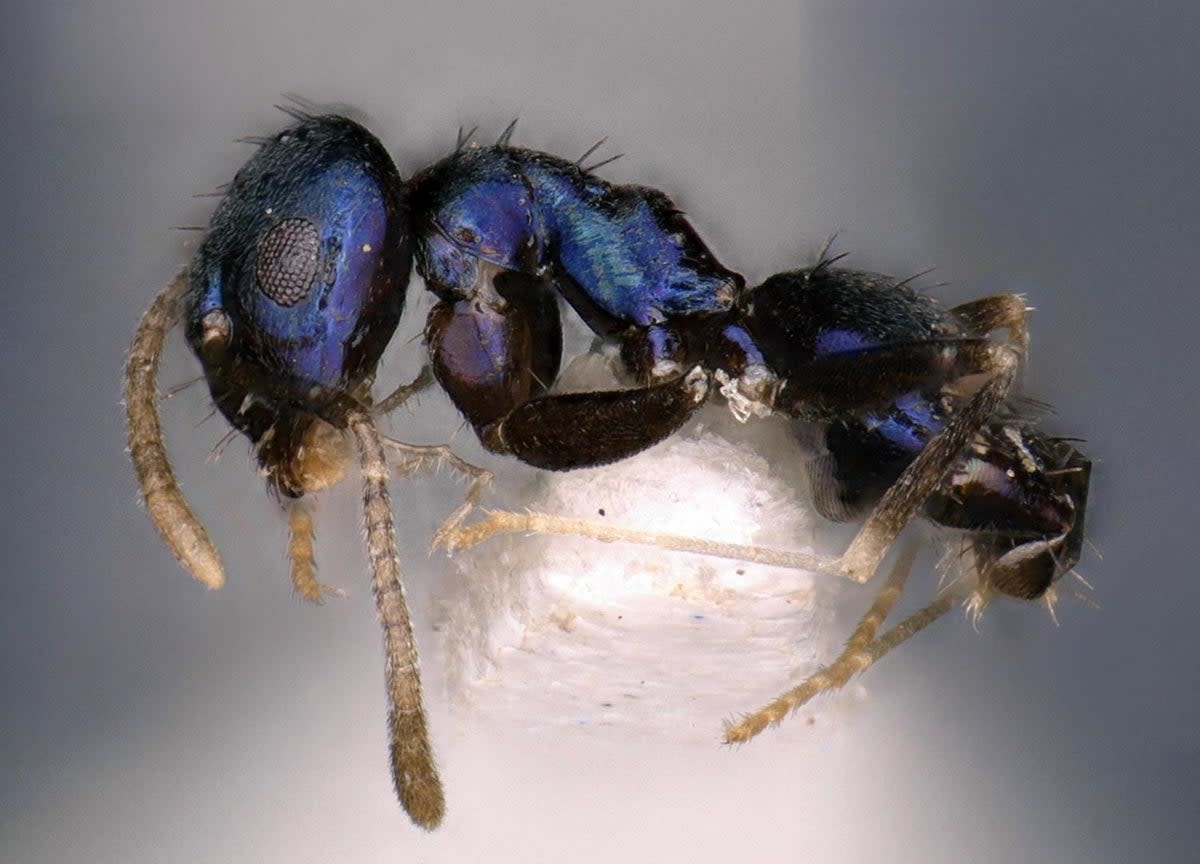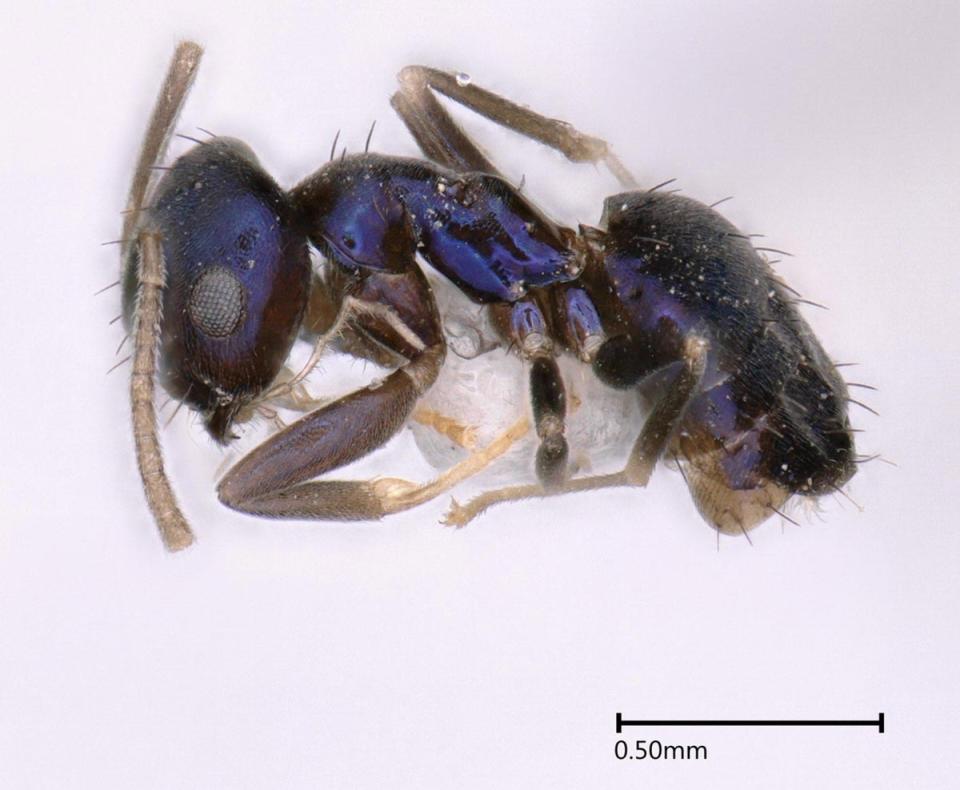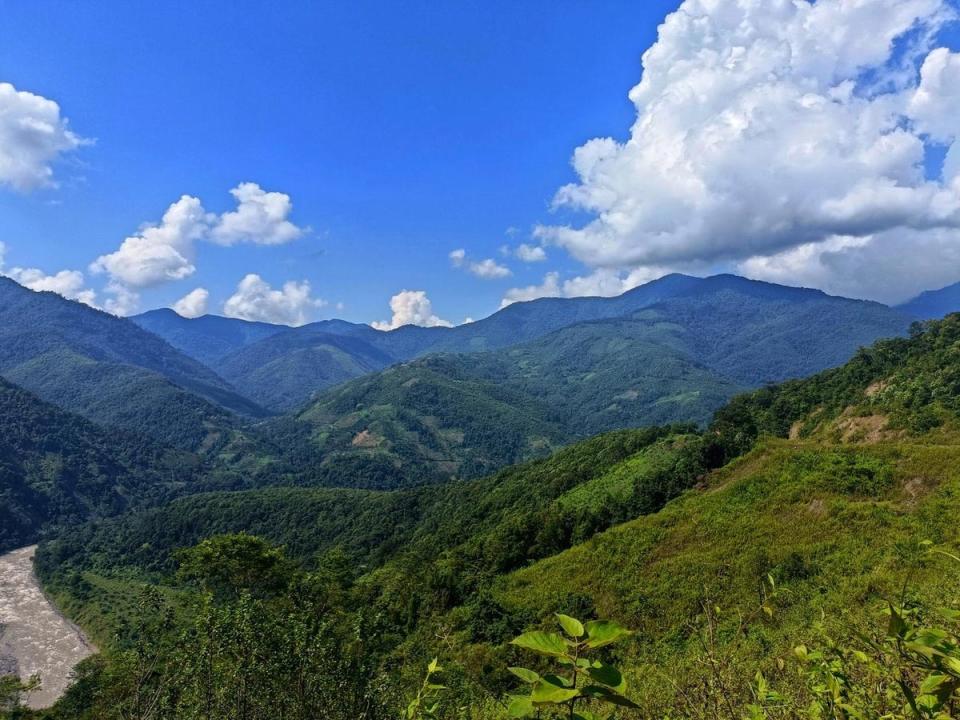Dazzling new blue ant species ‘neela’ discovered in Himalayas

Scientists have discovered a new blue ant species in India’s northeastern state of Arunachal Pradesh, sparking more interest in the unique biodiversity of this section of the Himalayas.
The rare small ant, named Paraparatrechina neela, reaches a length of less than 2mm and its body is predominantly metallic blue, except for its antennae, mandibles, and legs.
It has a triangular head featuring large eyes and a triangular mandible with five teeth.
The species, named after its distinct blue colour – “neela” in most Indian languages – has been described in a new study, published in the journal ZooKeys.
“While exploring a tree hole about 10ft up in a steep cattle track in the remote Yinku village one evening, something sparkled in the twilight,” researchers from the Ashoka Trust for Research in Ecology and the Environment (ATREE) in Bengaluru said.
While blue colouration is commonly seen in insects like butterflies, beetles as well as some bees and wasps, it is relatively rare in ants.
Of the nearly 17,000 known species and subspecies of ants worldwide, researchers say only a few exhibit blue colouration or iridescence.
Among insects, the blue colour is often produced by nanostructures that create colours using their optical properties rather than being directly caused by pigments.
It remains unclear whether the ant’s blue colour serves any purpose such as in communication, camouflage, or other ecological interactions.

The ant was discovered during a resurvey of the valley a century after the “Abhor” military expedition against indigenous people conducted in 1911-1912 during India’s British colonial rule.
The colonial expedition mapped large parts of the Siang Valley region and catalogued plants, frogs, lizards, fish, birds, mammals, and insects found.
Now, researchers from ATREE have embarked on expeditions under the banner “Siang Expedition” a century later to resurvey and document the biodiversity of the region.
“With the dim light available, two insects were sucked into an aspirator. To our surprise, we later found they were ants,” scientists said.

Studies have shown that this part of Arunachal Pradesh presents the world with unparalleled diversity, much of which is yet to be explored.
“However, this very richness, both cultural and ecological, faces unprecedented threats. Large-scale infrastructure projects like dams, highways, and military installations, along with climate change, are rapidly altering the valley,” study author Priyadarsanan Dharma Rajan cautioned.
“The impact extends beyond the valley itself, as these mountains play a critical role not only in sustaining their own diverse ecosystems but also in ensuring the well-being of millions of people living downstream,” Dr Rajan added.

